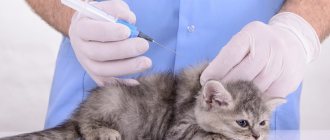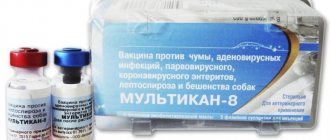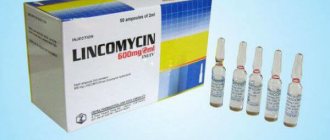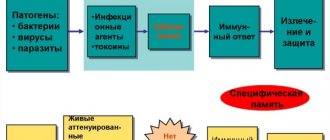According to statistics, in half of the cases of hospitalization of young children with signs of acute intestinal diseases, the cause is rotavirus enteritis. The problem is especially relevant for children under the age of about five years, who get sick more often than other age groups and have difficulty coping with the disease. The disease is dangerous because it can lead to dehydration due to severe vomiting, diarrhea and fever.
To protect babies, special vaccines have been developed, one of which, Rotatek, is successfully used all over the world. This is what is used at the Gorbakov Clinic for vaccination against rotavirus.
Vaccine composition
The drug "Rotatek" is produced by the American corporation "Merck Sharp and Dome" in the Netherlands. It contains live cultures of rotaviruses of five different subtypes, as well as safe excipients necessary to maintain the functionality of microorganisms.
The above-mentioned vaccine is produced through genetic engineering. It is based on a combined rotavirus, which contains sections of the genome that provoke an optimal immune response. This approach makes it possible to obtain high protection against viruses, since the latter regularly change their antigenic structure due to variability.
What contraindications does Rotatek have?
Strict contraindications to vaccination against rotavirus are the child's immunodeficiency status, blood transfusion within the last 42 days, intussusception (including a history), and allergy to any of the components.
High fever or acute gastrointestinal disorders may cause temporary medical withdrawal. After the child recovers, vaccination can be continued.
Like most vaccines, Rotatek does not protect against all serotypes that exist in nature, but it does protect against the most common five.
This is enough for your child to either not get sick with rotavirus at all, or to get sick much more mildly than an unvaccinated child, without a threat to life and health. MAKE AN APPOINTMENT PRICES
How is vaccination performed?
The timing of vaccination is determined by the pediatrician individually, since this vaccination is not included in the Calendar. Professor Gorbakov’s Clinic adheres to the recommendations from the instructions, so immunization is most often structured according to the following scheme:
- between six and twelve weeks of age, the baby receives the first dose;
- the recommended interval between vaccinations is from four to ten weeks;
- to form long-lasting immunity, the vaccine must be administered three times in a row - up to 8 months of age;
- In the case of this virus, revaccination is not necessary.
It is most convenient to combine immunization against rotavirus with routine vaccinations at three, four and a half and six months. If there is a need for early protection against rotavirus, the timing can be shortened: 6, 14, 22 weeks. It is not advisable to administer the first dose after 15 weeks of birth. However, if this happens, in the future it is worth reducing the interval to a minimum of four weeks.
Vaccination against rotavirus infection
Credits : Centers for Disease Control and Prevention (CDC)
The best way to protect a child from rotavirus infection is vaccination. Doctors recommend that all children receive this vaccination.
Why should my child be vaccinated against rotavirus?
Vaccine against rotavirus infection:
- protects your child from rotavirus infection, a potentially serious illness;
- prevents your child from developing diarrhea, vomiting and stomach pain caused by rotavirus infection;
- will not allow your child to miss school or kindergarten, and you will not miss your work while caring for a sick child at home.
Is the rotavirus vaccine safe?
The rotavirus vaccine is safe and effective and prevents the disease caused by the virus. Each RotaTeq® and Rotarix® test involved more than 70,000 volunteers. Millions of children in the United States have already received the vaccine during their mandatory vaccinations, and there have been no reported complications with its administration.
What are the side effects of rotavirus vaccination?
Side effects are rare and usually short-lived: minor restlessness, fever and diarrhea.
Some studies have shown a slight increase in the incidence of intussusception in infants within a week of receiving the first or second dose of rotavirus vaccine. Intussusception is a type of intestinal obstruction that requires hospital treatment. Studies estimate the risk of this happening to be 1 in 20,000 to 100,000 infants after vaccination.
Today there are two types of rotavirus vaccines - RotaTeq and Rotarix.
Both vaccines must be taken orally rather than by injection. What is rotavirus?
Rotavirus is a virus that causes severe diarrhea and vomiting. It mainly affects infants and young children. Diarrhea and vomiting can lead to severe dehydration, which can be fatal if not treated promptly, especially in young children.
What are the symptoms of rotavirus infection?
Rotavirus causes the following symptoms:
- fever;
- watery diarrhea;
- vomit;
- abdominal pain.
Diarrhea and vomiting usually last from 3 to 8 days, with children sometimes stopping eating and drinking altogether while they feel unwell, which can have serious consequences.
This is serious?

Rotavirus can be very dangerous. Diarrhea, vomiting and fever can cause severe loss of body fluids, and dehydration is very dangerous for infants and young children. Children who refuse to eat or drink at home may need intravenous medications in a hospital setting to replace fluids lost.
How does rotavirus spread?
Rotavirus spreads very quickly because the pathogen is found in the stool of people who are infected with the virus. Spread: Contaminated hands, diapers or shared objects such as toys, changing tables or doorknobs. The disease usually strikes with lightning speed everyone who does not have immunity to it, in families, hospitals and children's institutions.
Unfortunately, rotavirus is very resistant to environmental factors. It can remain active on various objects for several days if it is not neutralized with a disinfectant (meaning a detergent or cleaner that kills germs). But even with hand washing and cleaning common objects with disinfectants, it is very difficult to prevent rotavirus infection.
published 05/23/2017 12:17 updated 06/07/2017 — Infectious diseases
Effectiveness of vaccination
After three administrations, Rotatek forms immunity in the child during the most critical period - up to about five years. Like other vaccines, it does not provide 100% guarantee and protection, but it seriously facilitates the process of intestinal flu and significantly reduces the likelihood of serious complications.
After administration, the child’s body develops protection against all G-serotypes of the virus, including those that are not included in the drug. During the first season, the effectiveness of the immune response to severe rotavirus reaches 97%, and during the next two it is about 70%.
A high-quality and safe genetically engineered vaccine called “Rotatek” is easily tolerated by the body of a small child and forms stable protection. At the Gorbakov Clinic, vaccination is carried out under the supervision of experienced pediatricians, and upon completion, parents receive qualified recommendations and answers to any questions.
Vaccination calendar
Since 2006, the whole world has been massively vaccinated against rotavirus, and today such a vaccine is often included in various national calendars. In Russia, due to epidemiological indications, it has also been used for quite a long time - for at least 5-7 years. So far in a small number of regions, for example Moscow, Moscow region, Khanty-Mansi Autonomous Okrug. Here it is purchased at the expense of the local budget. The number of regions in which vaccination against rotavirus infection is being introduced is gradually increasing.
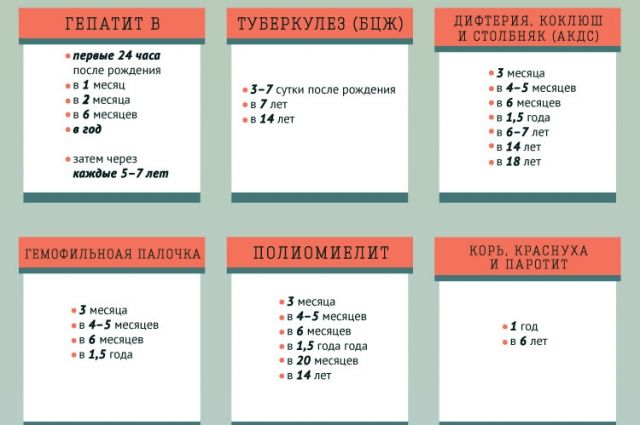
What vaccinations do adults and children need? Vaccination calendar Read more
Contraindications
Vaccination against rotavirus infection is contraindicated if:
- acute poisoning;
- intestinal disorder;
- dysfunction of the gastrointestinal tract;
- intestinal obstruction;
- intolerance to vaccine components;
- increased body temperature of any origin;
- colds or during the recovery period after them;
- proneness to allergies;
- congenital anomalies of the structure of the digestive tract;
- immunodeficiency;
- HIV infections.
Caution must be exercised in the following cases:
- the patient has chronic gastrointestinal diseases;
- there are congenital neurological or psychomotor disorders;
- pathologies of the immune system are present.
Preparing the child for the procedure
No specific preparation of the child for vaccination is required. On the day of immunization, the baby must be shown to the pediatrician. The doctor assesses the possibility of carrying out the procedure, examines the child and excludes contraindications.
- Immediately after the vaccine, children can be given food and water. There is no need to limit food intake, or force anyone to eat. You should not introduce new foods into your diet or feed them exotic dishes.
- After the vaccine is administered, you can walk outdoors if the weather conditions are good. However, you should avoid crowded places and crowds of children.
- If your baby is prone to allergies, you should discuss this issue with your pediatrician in advance. If necessary, your doctor will prescribe a mild antihistamine to prevent skin reactions.
The most famous vaccines against rotavirus
Regardless of which medical facility parents choose to vaccinate their child at, there are only two vaccines available to choose from. Both drugs are multicomponent because they protect against several infectious agents.
- Rotarix. The composition contains live components of a weakened virus. Manufactured in the UK and licensed in 125 countries. It is applied twice, which allows the formation of a stable protective reaction.
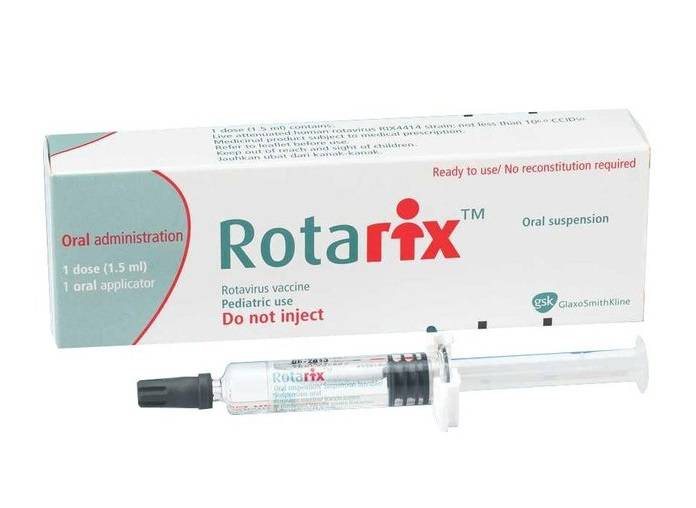
- Rotatek. Contains attenuated live virus obtained from humans and cattle. Made in America, used in European countries. To form a stable protective function, it requires three administrations.
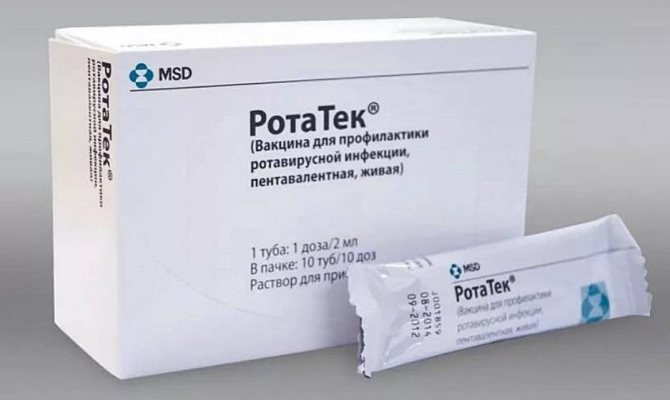
How is vaccination carried out?
Vaccination against rotavirus infections is administered orally to children.
Vaccines are produced in special applicators with a cap. Immediately before administration, the nurse opens the vaccine and instills the drug into the child’s cheek. This manipulation does not entail pain, unlike an injection.
If the child burps immediately after administering a portion of the vaccine, the second dose of the vaccine is not administered. This is due to the lack of clinical trials of such cases.
It is necessary to implement special hygiene rules when in contact with the feces of a vaccinated person.
This recommendation is based on clinical studies that have shown that after the first vaccination, the stool of 8.9% of children contains the virus, and the peak of its quantitative value occurs on the 7th day from the introduction of the vaccine. However, after the next dose of the vaccine, the virus content can be determined in only 0.3% of children.
There are no restrictions on walking or swimming during the post-vaccination period.
List of drugs that should be avoided after vaccination:
- Vitamin D for 5 days. Allergic reactions may develop.
- 1st generation antihistamines: Suprastin and Tavegil. These drugs have a drying effect on the mucous membranes of the upper respiratory tract, which can lead to secondary infection.
- Medicines containing aspirin to relieve fever. They irritate the mucous membranes and increase the load on the gastrointestinal tract, which can contribute to the development of complications.
- Antipyretics and antihistamines for preventive purposes.
Efficiency
11. Vaccines for preventing rotavirus diarrhoea: vaccines in use. (Soares-Weiser, 2012, Cochrane Database Syst Rev) Cochrane systematic review. In developed countries, vaccination reduces the risk of diarrhea by about 40% and the risk of severe rotavirus diarrhea by 86%.
Vaccination was not found to reduce mortality.
Serious adverse events (SAEs) were reported in 4.6% of Rotarix recipients and 2.4% of Rotatec recipients. A similar number of SAEs were reported in the placebo groups.
12. Cost-effectiveness and potential impact of rotavirus vaccination in the United States. (Widdowson, 2007, Pediatrics) Rotavirus vaccination in the United States will prevent 63% of all rotavirus cases, and 79% of all serious cases. This would result in 13 deaths and 44,000 hospitalizations averted per year.
If the price of a vaccine dose is more than $12, vaccination will not be economically justified from a public health point of view, and if the price of a dose is more than $42, it will not be justified from a social point of view. Today Rotatek costs $69-$83 per dose, and Rotarix $91-$110. 1 more].
13. Effectiveness of monovalent rotavirus vaccine (Rotarix) against severe diarrhea caused by serotypically unrelated G2P[4] strains in Brazil. (Correia, 2010, J Infect Dis) In Brazil, the rotavirus strain G2P[4], which was found in 19%-30% of cases before the start of vaccination, replaced all other strains within 15 months after the start of vaccination. The effectiveness of the vaccine (Rotarix) against this strain was 77% among children 6-11 months, and -24% (negative) among children over 12 months. More: [1], [2].
It is reported here that after the start of vaccination in Brazil, conventional rotavirus strains were replaced by a new strain, G12P[8]. Strain replacement also occurred in Paraguay and Argentina.
14. Effectiveness of the monovalent rotavirus vaccine in Colombia: a case-control study. (Cotes-Cantillo, 2014, Vaccine) The effectiveness of the vaccine (Rotarix) in Colombia among children 6-11 months was 79%; from severe cases of diarrhea 63%; and from very severe cases 67%. Efficacy among children over 12 months was -40%; from severe cases -6%; and from very severe cases -156% (negative effectiveness). Overall vaccine effectiveness for all ages was -2%; from severe cases -54%; and from very severe cases -114% (negative effectiveness). It reports here that in central Australia, the effectiveness of two doses of Rotarix was 19%, and the effectiveness of one dose was nil.
It is reported here that there is no correlation between the amount of antibodies produced and the clinical effectiveness of the vaccine.
15. Differentiation of RotaTeq® vaccine strains from wild-type strains using NSP3 gene in reverse transcription polymerase chain reaction assay. (Jeong, 2021, J Virol Methods) The authors analyzed stool from 1,106 infants with gastroenteritis and found group A rotavirus in a quarter of them. 13.6% of the detected strains were vaccine strains.




